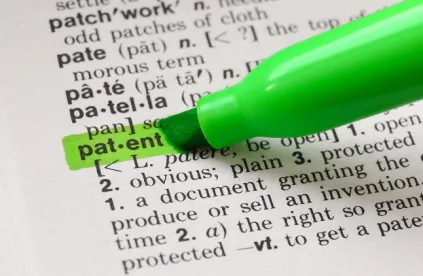Last week a Federal Circuit panel in Uniloc 2017 LLC v. Hulu, LLC issued an important decision regarding inter partes review (IPR) before the Patent Trial and Appeal Board on two questions concerning contingent motions to amend—(i) whether the Office has statutory authority to review the patentability of substitute claims after a final federal-court judgement of invalidity of those claims and, if yes, (ii) whether that review of patentability may include analyzing the substitute claims for patent eligibility under 35 U.S.C. § 101. The majority said “yes” to both. In this post we analyze the issue of statutory authority. Stay tuned tomorrow for our thoughts on the Board’s “patentability” review of substitute claims under § 101.
Uniloc appealed the final written decision in IPR2017-00948 against U.S. Patent No. 8,566,960 (the “’960 patent”) directed to adjusting software licenses to cover multiple devices. In 2016 Uniloc sued Hulu and Netflix in the Eastern District of Texas for infringing the ’960 patent. The district court held the ’960 patent invalid as directed to patent-ineligible subject matter under § 101. The Federal Circuit affirmed this decision on August 9, 2018. Prior to the district court’s ruling, Hulu filed an IPR challenging all claims of the ’960 patent. Uniloc responded by filing a contingent motion to amend the independent claims. The Board issued its final written decision on August 1, 2018 (just 8 days before the Federal Circuit affirmed the invalidity of the original claims under § 101) finding all original independent claims invalid and denying Uniloc’s motion to amend because the proposed substitute claims were directed to patent-ineligible subject matter under § 101. Uniloc sought rehearing of the Board’s final written decision on August 31, 2018, which the Board denied on January 18, 2019. Following the Board’s denial of its rehearing request, Uniloc appealed.
On the statutory authority issue, Hulu argued that the appeal was moot for two reasons. First, according to Hulu, contingent motions to amend in IPRs are not actually made “during the IPR” because they are contingent on the PTAB finding the original claims unpatentable—a finding that Hulu asserted ends the IPR. Second and relatedly, Hulu argued that, once the final federal-court judgment held the claims invalid, the Board’s consideration of the original claims was moot and the Office lacked statutory authority to consider Uniloc’s proposed substitute claims.
Writing for the majority, Judge Wallach opined that Hulu’s mootness arguments were not supported by any authority or statutory language:
Hulu cites no authority for treating the contingent motion … as anything but a standard form of in-the-alternative pleading, in which the second alternative, contingent on rejecting the first, is part of the proceeding and may be reached in the same decision as the first [and] has pointed to no statutory language that provides a basis for concluding that, once original claims no longer present a live dispute, the PTAB and the USPTO lose authority to consider proposed substitute claims that were presented in a contingent motion timely filed during the IPR when the original claims did present a live dispute.
In so ruling, the majority affirmed the availability of contingent motions to amend in IPRs, finding that it would be “unprecedented, and contrary to the established practice of considering contingent motions to amend” to treat the finding of original claims unpatentable as ending the IPR and prohibiting the review of proposed substitute claims.
Judge O’Malley penned a colorful dissent—“This case was dead on arrival—there were no live claims remaining in the ’960 patent” and thus the ’960 patent is “incapable of supporting any further proceedings.” In her view, “substitute claims” by definition replace the original claims and thus after the Federal Circuit’s affirmance of the district court’s invalidity determination, Uniloc “did not possess any patent rights that it could give up in exchange for a substitute claim.”
While the panel majority confirmed the longstanding practice of adding proposed substitute claims through a contingent motion to amend, Judge O’Malley’s articulations to the contrary, in circumstances where the original claims have been finally held invalid in a parallel proceeding, likely do not fall on deaf ears and may be ripe for en banc review.




 />i
/>i

